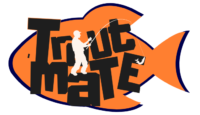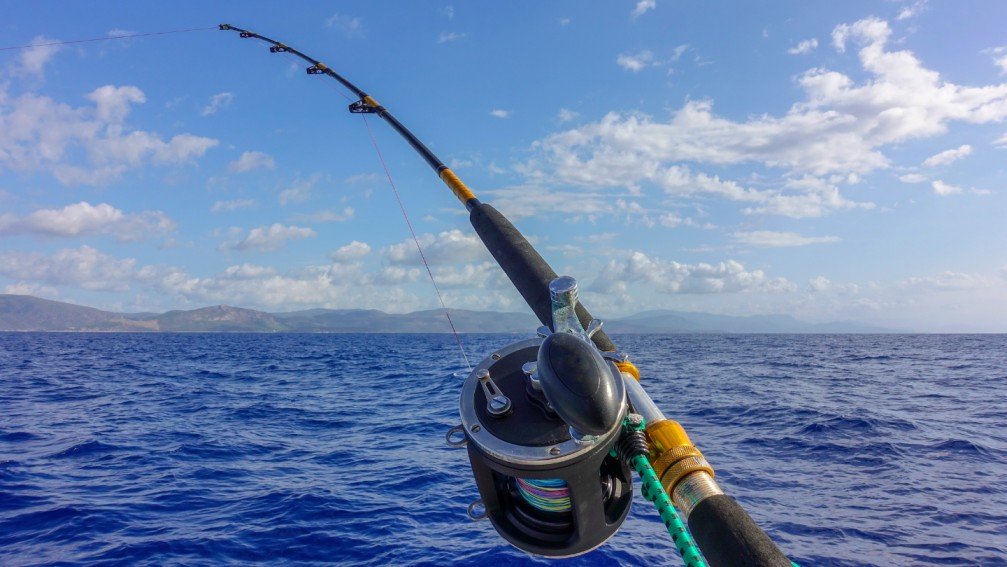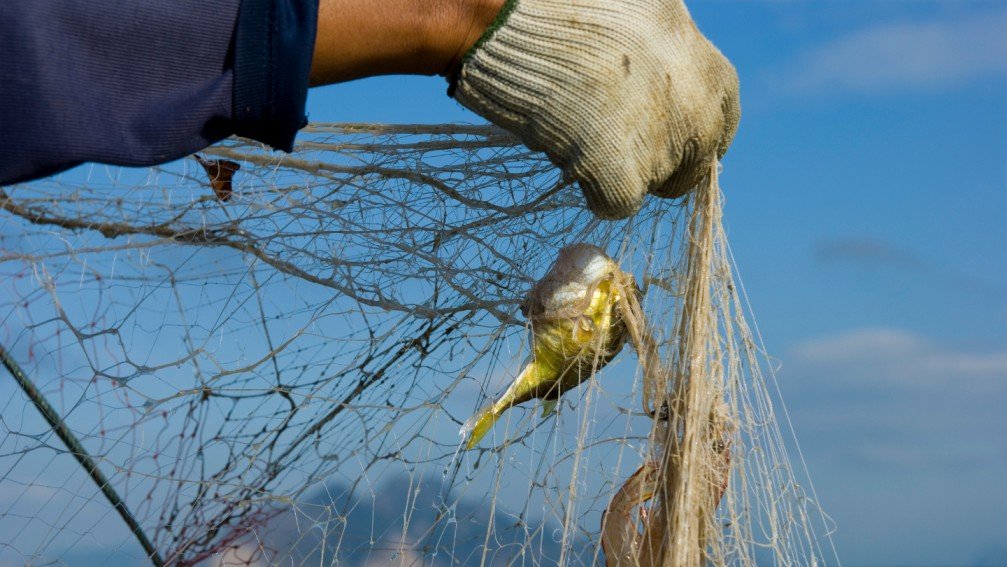Hold the fishing rod with your dominant hand. Cast the line by flicking your wrist forward, releasing the line.
Fishing can be an enjoyable and relaxing activity. For beginners, using a fishing rod may seem daunting at first. With a few simple steps, anyone can start fishing with ease. Understanding the basics of holding, casting, and reeling in the line is crucial.
Start by choosing the right fishing rod for your needs. Make sure it is comfortable to hold and easy to handle. Practice your casting technique in an open space to get the hang of it. Remember to be patient and enjoy the experience. With practice, you’ll find fishing to be a rewarding hobby.
Choosing The Right Fishing Rod
Choosing the right fishing rod is essential for beginners. The right rod makes your fishing experience enjoyable and successful. Let’s dive into the key aspects of selecting the perfect fishing rod for your first trip.
Types Of Fishing Rods
Fishing rods come in various types, each suited for different fishing styles. Here are the main types:
- Spinning Rods: Ideal for beginners. They are easy to use and versatile.
- Baitcasting Rods: Suitable for experienced anglers. Offers more control and precision.
- Fly Rods: Designed for fly fishing. Requires special casting techniques.
- Surf Rods: Used for fishing from the shore. They are longer and sturdier.
- Ice Fishing Rods: Shorter rods for ice fishing. Used in frozen lakes and ponds.
Materials And Length
The material and length of your rod affect its performance. Common materials include:
| Material | Characteristics |
| Fiberglass | Durable and affordable. Heavier than other materials. |
| Graphite | Lightweight and sensitive. More expensive than fiberglass. |
| Composite | Blend of fiberglass and graphite. Balanced performance. |
The length of the rod also matters. Here are some guidelines:
- Short Rods (6 feet or less): Better for short, accurate casts.
- Medium Rods (6-7 feet): Good balance of distance and accuracy.
- Long Rods (7 feet or more): Ideal for long-distance casting.
Budget Considerations
Your budget plays a crucial role in choosing a fishing rod. Here are some tips:
- Entry-level Rods: Cost between $20-$50. Good for beginners.
- Mid-range Rods: Priced between $50-$150. Offer better quality and features.
- High-end Rods: Cost $150 and above. Provide top performance and durability.
Stick to your budget, but ensure you get a rod that meets your needs. Happy fishing!
Essential Fishing Gear
Starting your fishing journey requires the right gear. Good equipment makes fishing fun and productive. Let’s explore the essential fishing gear you need.
Reels And Lines
Reels come in different types like spinning reels, baitcasting reels, and spincast reels. For beginners, spinning reels are easy to use. They are versatile and suitable for various fishing conditions.
Lines also vary. Monofilament lines are great for beginners. They are stretchy and forgiving. Fluorocarbon lines are more sensitive. Braided lines are strong and durable. Choose the line based on the fish species and water conditions.
Hooks And Baits
Hooks come in various sizes and shapes. The size of the hook depends on the fish you are targeting. Small hooks are for small fish, and large hooks are for big fish. Circle hooks are good for catch and release.
Baits can be live, artificial, or natural. Worms and minnows are popular live baits. Artificial baits mimic the appearance of fish prey. Natural baits include corn, dough balls, and bread. Choose your bait based on the fish species and the time of year.
Safety Equipment
Fishing is fun, but safety is vital. Always carry a life jacket, especially when fishing from a boat. Wear a hat and sunscreen to protect from the sun. Keep a first-aid kit in your fishing bag. A pair of polarized sunglasses protects your eyes and helps you see fish under the water.
Use a sharp knife or scissors to cut lines safely. Carry a whistle to alert others in case of emergency. Remember, safety first, then fun.
Setting Up Your Fishing Rod
Setting up your fishing rod is the first step to a successful fishing trip. This process involves several key steps. Each part is crucial to ensure your rod works properly. Below, we break down the process into easy steps.
Assembling The Rod
Start by taking out the rod pieces from the case. Most rods have two or more parts. Align the guides (the small loops on the rod). Push the pieces together firmly. Make sure the guides line up straight. This ensures smooth line movement.
Attaching The Reel
Next, attach the reel to the rod. Locate the reel seat on the rod handle. Place the reel foot into the seat. Tighten the reel seat by turning the locking mechanism. Ensure the reel is secure and doesn’t wobble.
Threading The Line
Take the fishing line and pass it through the guides. Start from the bottom guide near the reel. Work your way up to the tip of the rod. Ensure the line goes through each guide. This keeps the line straight and tangle-free.
Here is a quick checklist for threading the line:
- Start at the bottom guide.
- Work up to the rod tip.
- Ensure the line goes through each guide.
Follow these steps to set up your fishing rod perfectly. Happy fishing!
Basic Casting Techniques
Using a fishing rod for the first time can be exciting. You must learn the basic casting techniques for a good fishing experience. These techniques help you cast your line effectively and catch more fish.
Overhead Cast
The overhead cast is the most common casting technique. Follow these steps:
- Hold the rod with both hands.
- Stand with your feet shoulder-width apart.
- Lift the rod over your shoulder.
- Swing the rod forward in a smooth motion.
- Release the line when the rod reaches eye level.
Practice this cast to improve your accuracy and distance.
Sidearm Cast
The sidearm cast is useful in tight spaces. Here’s how to do it:
- Hold the rod parallel to the ground.
- Swing the rod to your side.
- Use a quick, smooth motion.
- Release the line as the rod points forward.
This cast is great for underhanded areas and windy conditions.
Underhand Cast
The underhand cast is perfect for short distances. Follow these steps:
- Hold the rod with one hand.
- Keep the rod tip low.
- Swing the rod upward in a gentle motion.
- Release the line at the peak of the swing.
This cast is ideal for small streams and ponds.
Here is a quick comparison of the three casts:
| Cast Type | Best For | Key Motion |
| Overhead Cast | Open spaces | Smooth forward swing |
| Sidearm Cast | Tight spaces | Quick side swing |
| Underhand Cast | Short distances | Gentle upward swing |
Master these basic casting techniques to enhance your fishing skills.

Understanding Fishing Knots
Understanding Fishing Knots is key for any beginner angler. Knots secure your hook, lure, or bait to your fishing line. They are vital for catching fish effectively. Here, we explore three essential fishing knots: the Improved Clinch Knot, Palomar Knot, and Loop Knot.
Improved Clinch Knot
The Improved Clinch Knot is a reliable knot for beginners. It’s used to attach the line to hooks, swivels, and lures.
- Thread the line through the hook eye.
- Wrap it around the main line 5-7 times.
- Insert the end of the line through the first loop.
- Pass it through the big loop.
- Pull tight and trim excess line.
This knot is strong and easy to tie. It works well for most fishing conditions.
Palomar Knot
The Palomar Knot is another simple and strong knot. It’s great for tying braided lines to hooks.
- Double about 6 inches of line and pass it through the hook eye.
- Tie a simple overhand knot with the doubled line.
- Pass the hook through the loop.
- Pull both ends to tighten.
- Trim the excess line.
The Palomar Knot is very strong and easy to tie. It’s perfect for beginners.
Loop Knot
The Loop Knot allows the lure to move freely. This is ideal for artificial lures and flies.
- Create an overhand knot in the line, but don’t tighten it.
- Pass the tag end through the hook eye.
- Insert the tag end back through the overhand knot.
- Wrap the tag end around the standing line 4-5 times.
- Pass it back through the overhand knot again.
- Pull tight and trim the excess line.
The Loop Knot provides natural lure movement. This increases the chances of attracting fish.
Baiting The Hook
Getting your hook properly baited is a key step in fishing. It makes your lure appealing to fish. This section will guide you through choosing the right bait, understanding the difference between live and artificial bait, and proper hooking techniques.
Choosing The Right Bait
Choosing the right bait depends on the type of fish you aim to catch. For freshwater fishing, consider worms, minnows, or crickets. For saltwater fishing, shrimp or squid are great choices. Always research the fish you want to catch and their preferred food.
Live Bait Vs. Artificial Bait
| Live Bait | Artificial Bait |
| More appealing to fish | Reusable and durable |
| Requires proper storage | Easier to store |
| Can be messy | Less mess |
Proper Hooking Techniques
- Hooking Live Bait: Insert the hook through the back or lips. Make sure not to kill the bait.
- Hooking Worms: Thread the worm onto the hook. Cover as much of the hook as possible.
- Hooking Artificial Bait: Use the bait’s pre-made holes for the hook. Follow the bait manufacturer’s instructions.
Proper hooking ensures your bait stays on the hook. This increases your chances of catching fish.
Spotting Ideal Fishing Locations
Finding the right place to fish is important. It can mean the difference between a fun day and no fish. Let’s explore some key points to help you find the best fishing spots.
Freshwater Vs. Saltwater
Decide if you want to fish in freshwater or saltwater. Freshwater spots include lakes, rivers, and ponds. Saltwater spots are oceans and seas.
| Freshwater | Saltwater |
| Lakes | Oceans |
| Rivers | Seas |
| Ponds | Bays |
Reading The Water
Learn to read the water. Look for signs of fish activity. Moving water is often a good place to fish. Fish like to gather near structures like rocks and logs.
- Moving water: Streams and rivers
- Fish activity: Look for jumping fish
- Structures: Rocks, logs, and plants
Local Fishing Regulations
Check local fishing rules. Each place has its own regulations. Make sure to have the right permits. Follow size and catch limits to protect fish populations.
- Check rules: Look online or ask local authorities
- Get permits: Some places require fishing licenses
- Follow limits: Respect size and catch rules
Credit: m.youtube.com
Landing Your First Catch
Catching a fish for the first time is exciting. It’s a moment you’ll always remember. This guide will help you land your first catch with ease. Follow these simple steps to ensure success.
Reeling In The Fish
Once a fish bites, it’s time to reel it in. Keep the rod tip up to maintain tension. Turn the handle of the reel slowly. Avoid jerky movements to prevent the fish from escaping. If the fish pulls hard, let it take some line. This helps tire the fish out.
Using A Landing Net
A landing net helps secure your catch. Choose a net with a long handle. Position the net under the fish. Scoop the fish gently to avoid injury. Make sure the net is deep enough to hold the fish securely.
Removing The Hook
Removing the hook is the final step. Use needle-nose pliers for this task. Grip the hook firmly and twist it out gently. Be careful not to harm the fish. If the hook is deep, cut the line and leave the hook in. The fish will eventually expel it.
Quick Tips For Landing Your First Catch
- Keep calm and be patient.
- Use the right gear for the fish species.
- Practice catch and release for sustainability.
Essential Gear Checklist
| Item | Purpose |
| Fishing Rod | To cast and reel in fish. |
| Reel | To control line tension. |
| Landing Net | To secure the fish. |
| Needle-nose Pliers | To remove hooks. |
| Fishing Line | To connect the hook and rod. |
Maintaining Your Fishing Gear
Proper maintenance of your fishing gear ensures longevity and optimal performance. By keeping your equipment clean and well-cared for, you can enjoy a hassle-free fishing experience. Let’s dive into the key areas of maintaining your fishing gear.
Cleaning The Rod And Reel
After each fishing trip, clean your rod and reel to remove dirt and salt. Use a soft cloth and mild soap to wipe down the rod. Rinse the reel with fresh water to remove saltwater residue. Dry thoroughly to prevent rust.
Storing Equipment Properly
Proper storage of your fishing gear is vital. Store rods vertically to prevent bending. Keep reels in a dry place to avoid moisture damage. Consider using rod racks or holders to keep them organized.
Routine Checks And Repairs
Regular checks and repairs keep your gear in top shape. Inspect the rod for cracks and the guides for damage. Check the reel’s drag system and lubricate it periodically. Replace any worn or damaged parts to ensure optimal performance.
Credit: www.reddit.com
Mastering a fishing rod is easier than it seems. Follow these steps, and you’ll be casting like a pro. Practice regularly to improve your skills. Enjoy the tranquility and thrill of fishing. Soon, you’ll have great stories to share. Happy fishing and tight lines!



